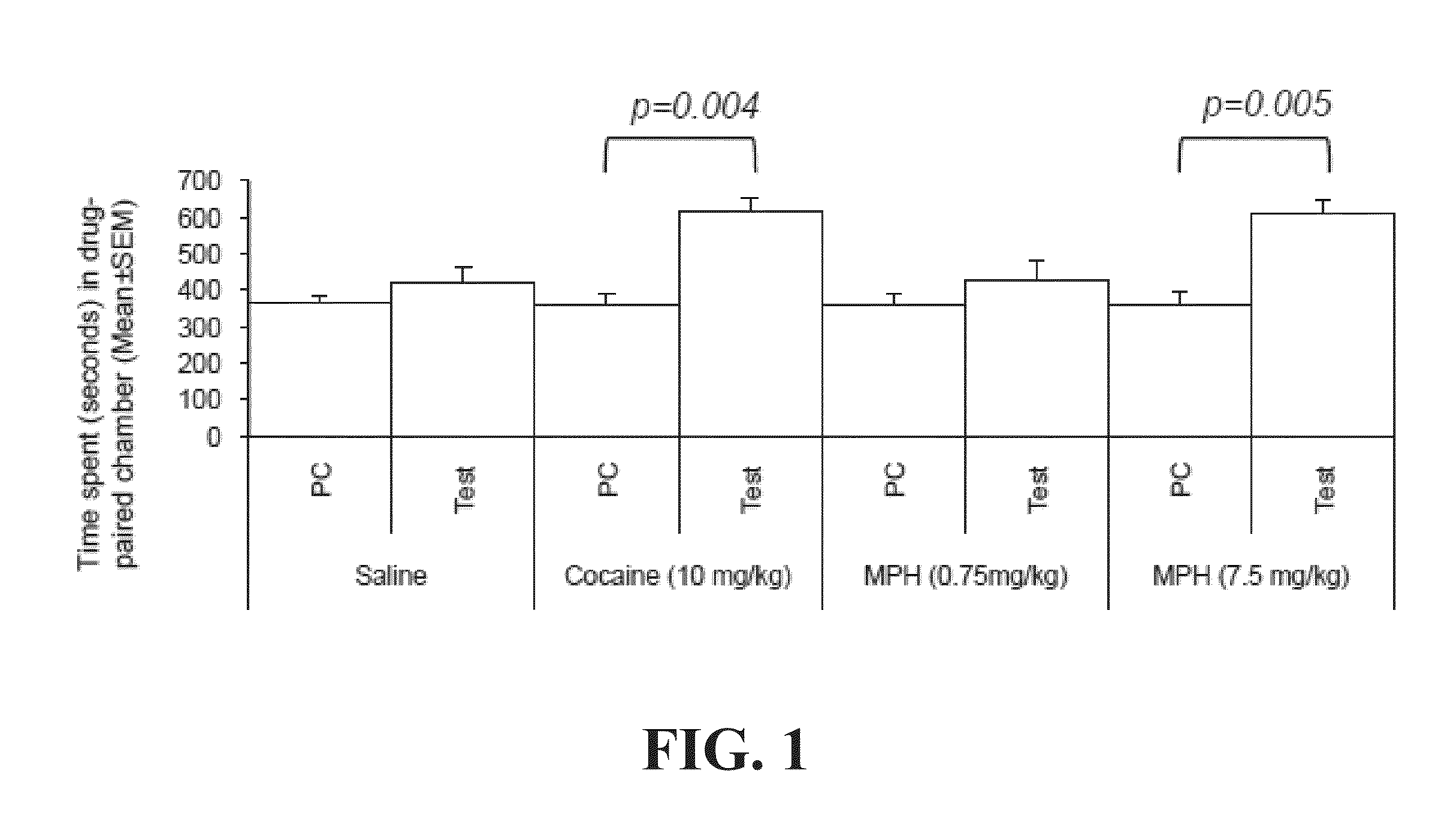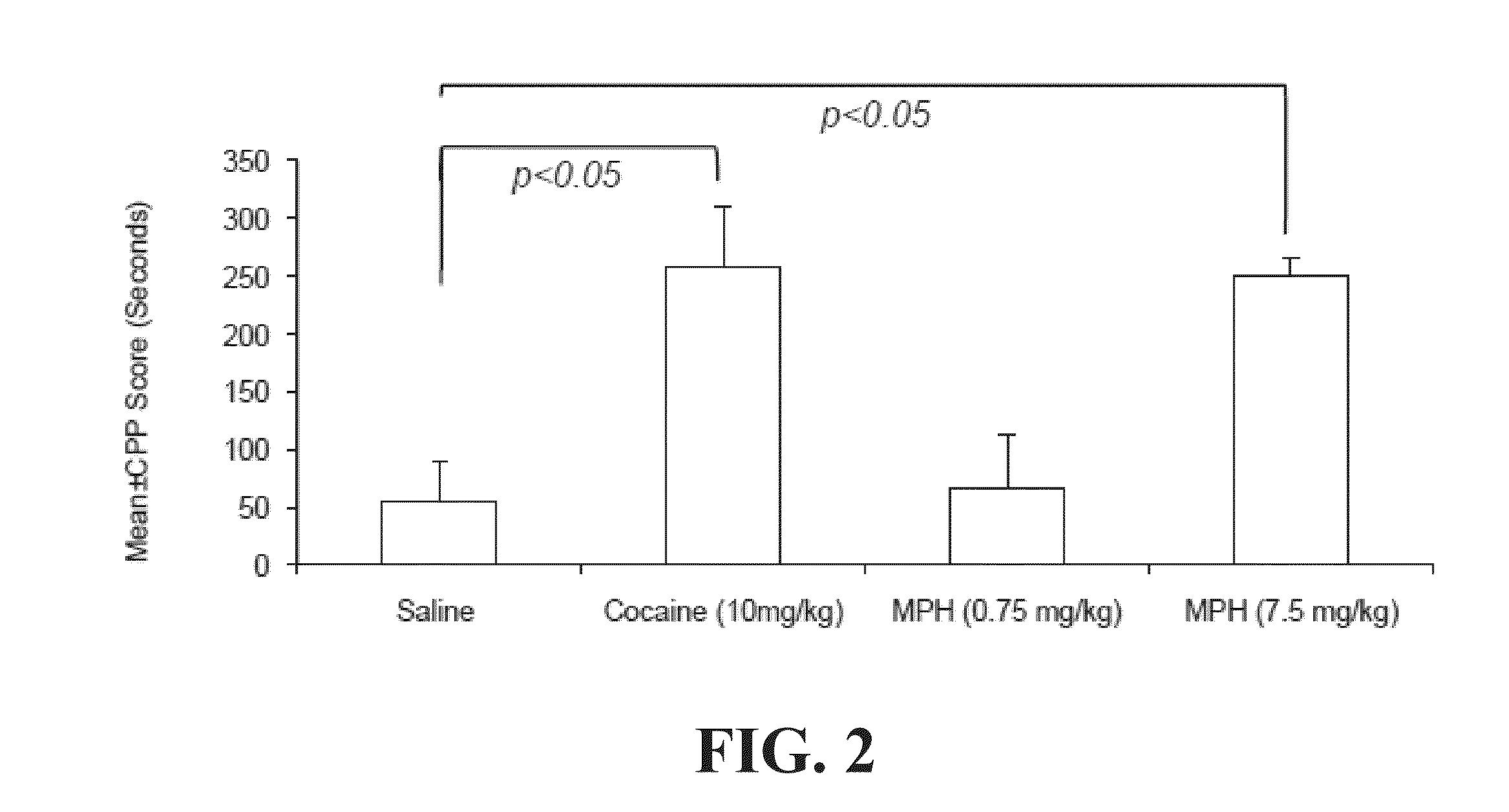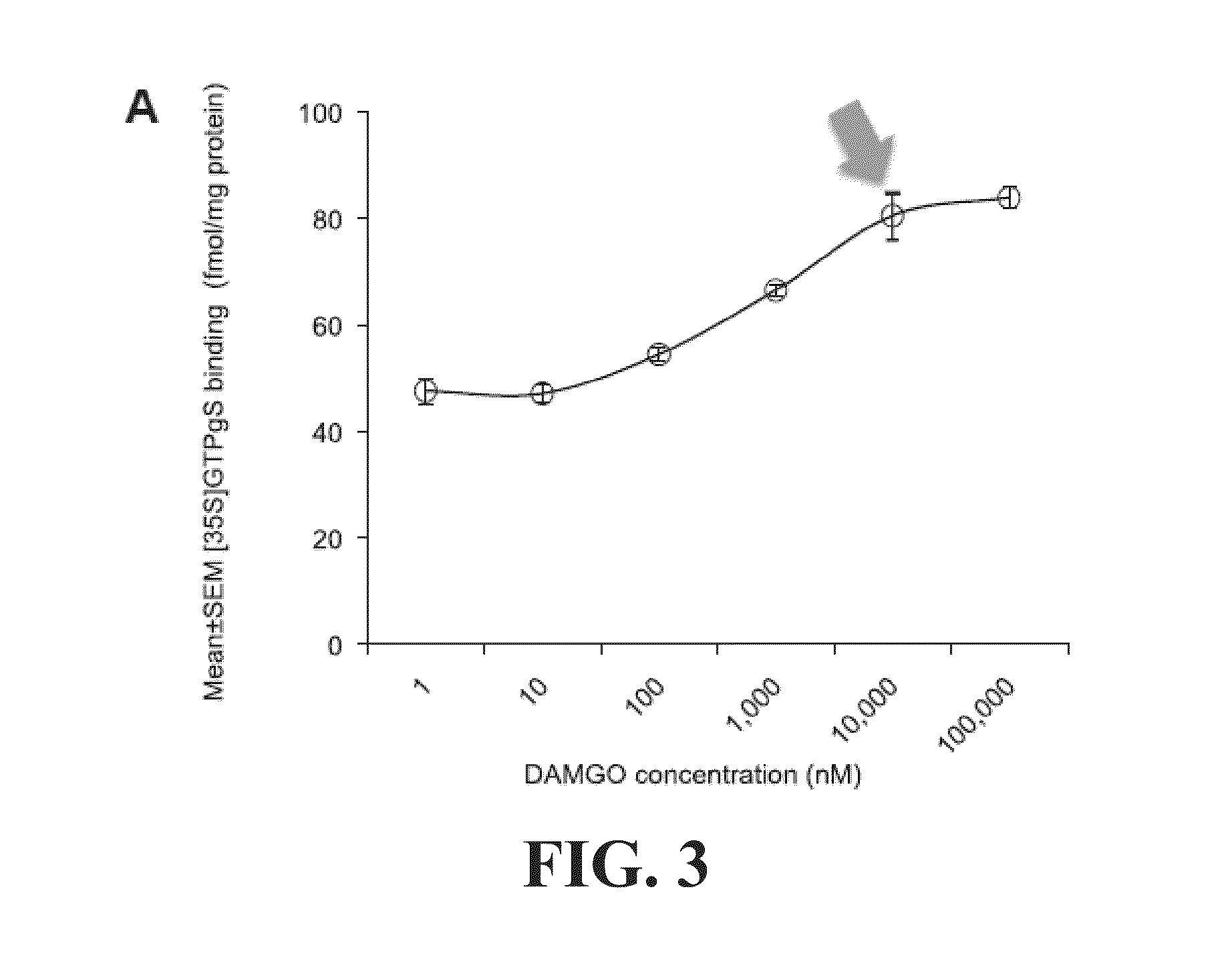CNS stimulant and opioid receptor antagonist combination as a non-addictive, non-aversive and synergistic Anti-obesity treatment
a stimulant and opioid receptor technology, applied in the field of obesity treatment, can solve the problems of increasing the risk of various diseases and health problems, heart disease, and high blood pressur
- Summary
- Abstract
- Description
- Claims
- Application Information
AI Technical Summary
Benefits of technology
Problems solved by technology
Method used
Image
Examples
example 1
Prior Exposure to Opioid Receptor Antagonist Attenuates High-Doses MPH-Induced CPP
[0115]This example illustrates that high doses of MPH induce conditioned place preference (CPP) and enhance μ opioid receptor (MOPR) activity in mouse model. Prior exposure to naltrexone attenuates high-dose MPH-induced CPP and decreases MOPR activity.
Materials and Methods
[0116]C57 / B6 mice are purchased from Charles River Laboratories. Only male mice are used.
Conditioned Place Preference (CPP)
[0117]A three-chamber place preference apparatus is used. The apparatus has two equally sized (16.8×12 cm) preference chambers connected by a central chamber (7.2×12 cm), and is outfitted with sliding guillotine-style doors between each chamber. Photobeams connected to a computer system can record animal location and time spent in that location. The central chamber has a gray colored smooth floor. The preference chamber is either white with a mesh floor or black with a bar floor. The CPP procedure included three p...
example 2
Analysis of the Treatment Effect of Combinations of Methylphenidate and Naltrexone on Body Weight in Mice
[0136]This example illustrates the treatment of obesity in a mouse model via the administration of a combination of methylphenidate and naltrexone.
Materials and Methods
[0137]C57 / B6 mice (male, 4 week old) are purchased from Charles River Laboratories (Kingston, R.I.) and singly housed in standard mouse shoebox cages on a 12 hr. light-dark cycle. Each mouse is provided with an ad libitum supply of drinking water and a high fat rodent diet (45% kCal % diet, pellets, #D12451, Research Diets Inc., New Brunswick, N.J.) for eight weeks.
[0138]It is anticipated that the mice nearly double their body weight: for example, from approximately 20 g at the start of the high fat diet to approximately 40 g at the end of an 8-week period.15
[0139]At the end of the 8-week period, the mice are divided into 6 groups as shown is Table 1, wherein each group has 10 mice. Each group receives the drugs o...
example 3
Use Utilities
[0152]A therapeutically effective amount of a combination of one or more CNS stimulants and / or pharmaceutically acceptable analogs, salts, or hydrates of the CNS stimulants and one or more non-selective opioid receptor antagonists and / or pharmaceutically acceptable analogs, salts, or hydrates of the one or more non-selective opioid receptor antagonists is used for the treatment of obesity.
Routes of Administration
[0153]A therapeutically effective amount of one or more stimulants and one or more non-selective opioid receptor antagonists and / or pharmaceutically acceptable analogs, salts, or hydrates of the one or more non-selective opioid receptor antagonists can be administered in a combination by a variety of routes. In effecting treatment of a subject afflicted with obesity, the composition can be administered in any form or mode that makes the composition bioavailable in an effective amount. The routes encompass oral and parenteral routes. For example, the compounds ca...
PUM
| Property | Measurement | Unit |
|---|---|---|
| time | aaaaa | aaaaa |
| time | aaaaa | aaaaa |
| time | aaaaa | aaaaa |
Abstract
Description
Claims
Application Information
 Login to View More
Login to View More - R&D
- Intellectual Property
- Life Sciences
- Materials
- Tech Scout
- Unparalleled Data Quality
- Higher Quality Content
- 60% Fewer Hallucinations
Browse by: Latest US Patents, China's latest patents, Technical Efficacy Thesaurus, Application Domain, Technology Topic, Popular Technical Reports.
© 2025 PatSnap. All rights reserved.Legal|Privacy policy|Modern Slavery Act Transparency Statement|Sitemap|About US| Contact US: help@patsnap.com



